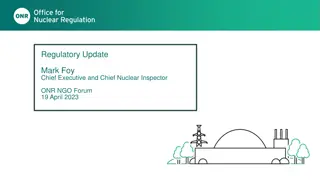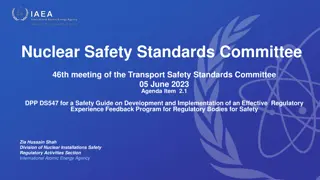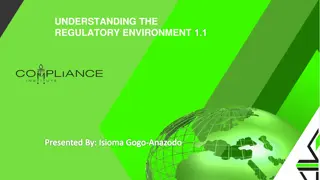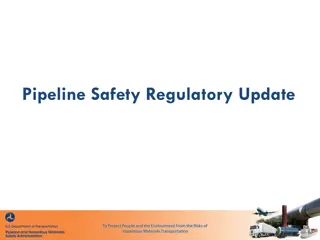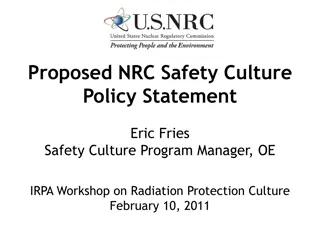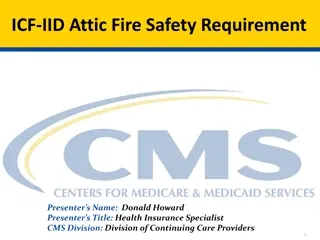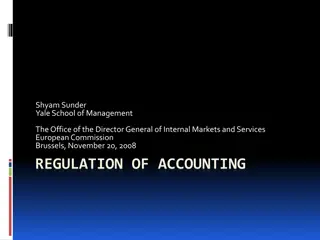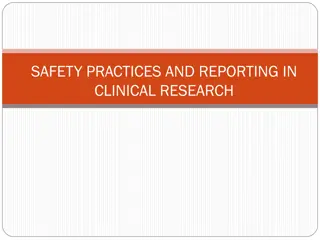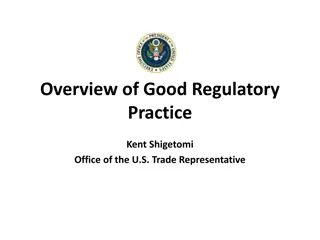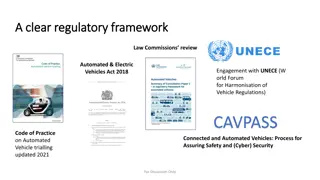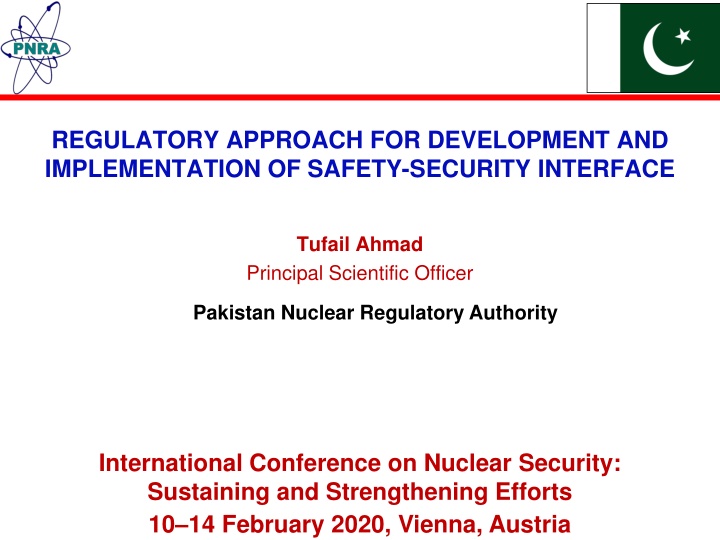
Development and Implementation of Safety-Security Interface: Regulatory Approach by Tufail Ahmad
Learn about the regulatory approach for the development and implementation of the safety-security interface as presented by Tufail Ahmad, Principal Scientific Officer at the Pakistan Nuclear Regulatory Authority. Explore the challenges and solutions in ensuring both safety and security in nuclear application, as discussed at the International Conference on Nuclear Security.
Download Presentation

Please find below an Image/Link to download the presentation.
The content on the website is provided AS IS for your information and personal use only. It may not be sold, licensed, or shared on other websites without obtaining consent from the author. If you encounter any issues during the download, it is possible that the publisher has removed the file from their server.
You are allowed to download the files provided on this website for personal or commercial use, subject to the condition that they are used lawfully. All files are the property of their respective owners.
The content on the website is provided AS IS for your information and personal use only. It may not be sold, licensed, or shared on other websites without obtaining consent from the author.
E N D
Presentation Transcript
REGULATORY APPROACH FOR DEVELOPMENT AND IMPLEMENTATION OF SAFETY-SECURITY INTERFACE Tufail Ahmad Principal Scientific Officer Pakistan Nuclear Regulatory Authority International Conference on Nuclear Security: Sustaining and Strengthening Efforts 10 14 February 2020, Vienna, Austria
Outline Introduction Understanding Safety-Security Interface PNRA Approach for Interface Challenges Conclusion 2
Introduction Sustainable use of nuclear energy requires both safe and secure operation of nuclear facilities; Both nuclear safety and security can be made effective through implementation of integrated regulatory oversight and properly managed safety-security interfaces; Pakistan Nuclear Regulatory Authority (PNRA) was established in 2001 with the responsibility of establishing and enforcing implementation of regulatory framework to ensure the safe and secure applications of nuclear material, and other radioactive sources and radiation generators. 3
Understanding Safety-Security Interface(1/2) Nuclear independently influenced each other in many aspects; Nuclear safety and nuclear security have some conflicting requirements and some shared elements which provide basis for interface ; Safety-security interface can be achieved by identifying and managing elements of both enhancements and conflicts; Conflicts cannot be avoided but can be managed; Regulatory approach for managing safety-security interface is necessary. safety and nuclear exclusively security interacting evolved without but 4
Understanding Safety-Security Interface(2/2) Identify safety and security areas and other arrangements that must or could interact Analyze and assess the overlap to determine potential impacts (commonalities and contradictions) Resolve Contradictions Strengthen Commonalities Coordinate activities and processes involving Safety- Security Interface 5
PNRA Approach for Interface (1/7) Regulatory Requirements for Interface Centralized Emergency Coordination Centre Process for Development of Regulations Unified Authorization Process Rotation Policy Salience of Regulatory Approach Safety and Security Inspections Process Information Management Human Resource Development Leadership and Management Safety and Security Cultures Modification Management 6
PNRA Approach for Interface (2/7) Regulatory Requirements for Interface Specific requirements for safety-security Interface are addressed in: PNRA Regulations on Physical Protection of Nuclear Material and Nuclear Installations PAK/925; PNRA Regulations on Security of Radioactive Sources PAK/926; PNRA Regulations on Management of a Nuclear or Radiological Emergency (PAK/914); Other PNRA regulations which are under development/ revision are also considering interface requirements; PNRA Regulations set prime responsibility with the licensee for both safety and security. 7
PNRA Approach for Interface (3/7) Development of Regulations The process for development of Regulations considers involvement of safety and security experts and all stakeholders to ensures that conflicting requirements are either avoided or enough clarity provided. Unified Authorization Process Issuance of single Licence/Authorization covering both safety and security; The process ensures that any conflicting requirement is properly addressed by the licensee; Issuance of license of operating personnel of nuclear installations. 8
PNRA Approach for Interface (4/7) Safety and Security Inspections Process The regulatory inspections are managed through Regional Nuclear Safety Directorates (RNSDs) and only qualified Inspectors perform regulatory inspections; Inspections are conducted by a team comprising of both safety and security inspectors; Leadership and Management Recognition of the role of Leadership for addressing and resolving interface issues; Developed Management System which defines roles and responsibilities for nuclear safety and security; PNRA is developing new Regulations on Leadership and Management . 9
PNRA Approach for Interface (5/7) Change/Modification Management All the changes/modifications regarding safety and security at facilities require prior approval from PNRA. Centralized Emergency Coordination Centre PNRA s National Radiation Emergency Coordination Centre (NRECC) acts as a centralized emergency coordination and event reporting centre for nuclear safety and security events. NRECC is equipped with a network of mobile radiological monitoring laboratories to provide response for both safety and security events. NRECC conducts exercises to test response for both safety and security events. 10
PNRA Approach for Interface (6/7) Rotation Policy To ensure that the workforce develop deep understanding of regulatory functions and learn about safety and security; To avoid complacency. Information Management PNRA ensures openness and transparency in safety related information and confidentiality of sensitive information. Safety and Security Cultures Established regulatory oversight for safety & security cultures; Conducted safety culture self-assessment; Developing methodologies assessment and integration of the assessment of both cultures (organizational culture). for security culture self- 11
PNRA Approach for Interface (7/7) Human Resource Development A sustainable human resource development provides foundation for nuclear safety and nuclear security; Establishment of National Institute of Safety and Security (NISAS) and associated nuclear safety and security labs; Conduct of mandatory professional training courses for PNRA staff on nuclear safety and security; Fellowship program at the Pakistan Institute of Engineering and Applied Sciences (PIEAS) for MS in various nuclear disciplines including specialization in Nuclear Security. 12
Challenges The challenges for dealing with safety and security interface include: Development of common understanding of safety and security experts on interface issues; Capacity building for addressing safety-security interface; Enhancement of comprehensive understanding of safety and security cultures, harmonization of both cultures and development of methodology for self-assessment; Strengthening capabilities for cyber security in regulatory perspective; Lack of comprehensive IAEA safety and security standards on safety-security interface. 13
Conclusion Nuclear safety and nuclear security are equally important for the protection of people and the environment from harmful effects of ionizing radiation; Being the national nuclear regulator, PNRA has adopted systematic approach and methodology to deal with the safety-security interface; To cope with associated challenges, PNRA has planned competence development in longer run for safety- security interface; IAEA should develop further guidance documents and dedicated training course on the safety-security interface. 14





